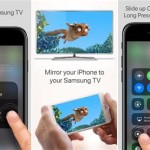Screen Mirror Android Phone To Smart TV
Screen mirroring allows users to replicate their Android phone's display on a larger screen, such as a smart TV. This functionality provides a convenient way to share content, including photos, videos, presentations, and even mobile games, with a larger audience. Various methods exist for mirroring an Android screen to a smart TV, each with specific advantages and requirements.
One common method utilizes built-in Chromecast technology. Many modern smart TVs have Chromecast functionality integrated directly into their operating system. For TVs lacking this built-in feature, a separate Chromecast dongle can be purchased and connected to an available HDMI port. To mirror an Android screen using Chromecast, both the phone and the TV (or Chromecast dongle) must be connected to the same Wi-Fi network. Users can then initiate screen mirroring through the notification shade quick settings menu or the "Cast screen" option within supported apps.
Another prevalent method leverages Miracast technology. Similar to Chromecast, Miracast facilitates wireless screen sharing. Many smart TVs offer built-in Miracast support, often referred to as "Screen Mirroring" or "Wireless Display" in the TV's settings. Android phones also typically include Miracast support, although the specific naming and location within the settings menu may vary depending on the phone manufacturer and Android version. Connecting via Miracast usually involves selecting the TV from a list of available devices on the phone's screen mirroring settings.
Some Smart TVs offer dedicated apps for screen mirroring from specific Android phone manufacturers. For example, certain Samsung TVs have apps designed for seamless mirroring from Samsung Galaxy devices. These apps often provide additional features and optimizations compared to standard Chromecast or Miracast methods. Users with compatible devices can often find these apps in their TV's app store.
A wired connection offers an alternative to wireless mirroring. This typically involves connecting the Android phone to the TV using a USB cable and selecting the appropriate display output mode on the phone. While wired connections often require specific adapters depending on the phone's and TV's ports, they tend to provide a more stable connection with minimal latency compared to wireless methods. This makes them particularly suitable for activities requiring precise timing, such as gaming.
DLNA (Digital Living Network Alliance) technology offers another method for sharing content, although it differs slightly from true screen mirroring. DLNA allows devices on the same network to stream media files to each other. While not a direct replication of the phone's screen, DLNA allows users to share photos, videos, and music from their Android phone to their smart TV through compatible DLNA apps. This can be a useful alternative for sharing specific media files when full screen mirroring isn't required.
Several factors can impact the performance of screen mirroring. Network congestion can lead to lag or buffering issues. Ensuring a strong and stable Wi-Fi connection is crucial for optimal performance. The distance between the phone and the TV can also play a role in wireless mirroring quality. Additionally, the processing power of both the phone and the TV can influence the overall responsiveness and fluidity of the mirrored display. Older or less powerful devices may experience performance limitations.
Troubleshooting screen mirroring issues often involves checking the basics. Confirming both devices are connected to the same Wi-Fi network and that the chosen mirroring method (Chromecast, Miracast, etc.) is properly enabled on both devices is essential. Restarting both the phone and the TV can also resolve temporary software glitches. If issues persist, consulting the user manuals or support documentation for both devices can provide more specific troubleshooting steps.
The ability to mirror an Android phone to a smart TV enhances the viewing experience for a variety of content. Whether sharing photos with family, delivering presentations, or enjoying mobile games on a larger display, the versatility of screen mirroring provides valuable functionality for Android users.
Different television manufacturers may employ varying terminology and menu structures for accessing screen mirroring features. Consulting the TV's user manual can provide specific instructions for enabling and using screen mirroring functionality. Similarly, the location of screen mirroring settings within the Android phone's settings menu can vary depending on the phone manufacturer and Android version.
When using third-party apps for screen mirroring, ensuring compatibility with both the Android phone and the smart TV is critical. Reading app reviews and checking the developer's website for compatibility information can help ensure a smooth and functional screen mirroring experience.
The evolution of screen mirroring technology continues to provide users with more seamless and versatile options for sharing content between their Android devices and smart TVs. As technology advances, further improvements in connection stability, latency reduction, and feature enhancements are anticipated.

How To Mirror From Your Samsung Smartphone Tv New Zealand

Top 3 Ways To Screen Mirror Android Sony Tv

A Guide To Screen Mirroring From Android Samsung Lg Sony And Roku Tvs Dignited

How To Cast Iphone Android Phone Your Tv Asurion

Make Android Screen Mirroring On Smart Tv

How To Mirror An Android Device On Your Tv Cnet

How To Mirror From Your Samsung Smartphone Tv New Zealand

Miracast 7 Facts You Should Know Before Using On Android

Screen Mirror Lg Smart Tv For Android Bazaar

How To Turn Off Screen Mirroring 11 Best Methods Airbeamtv








